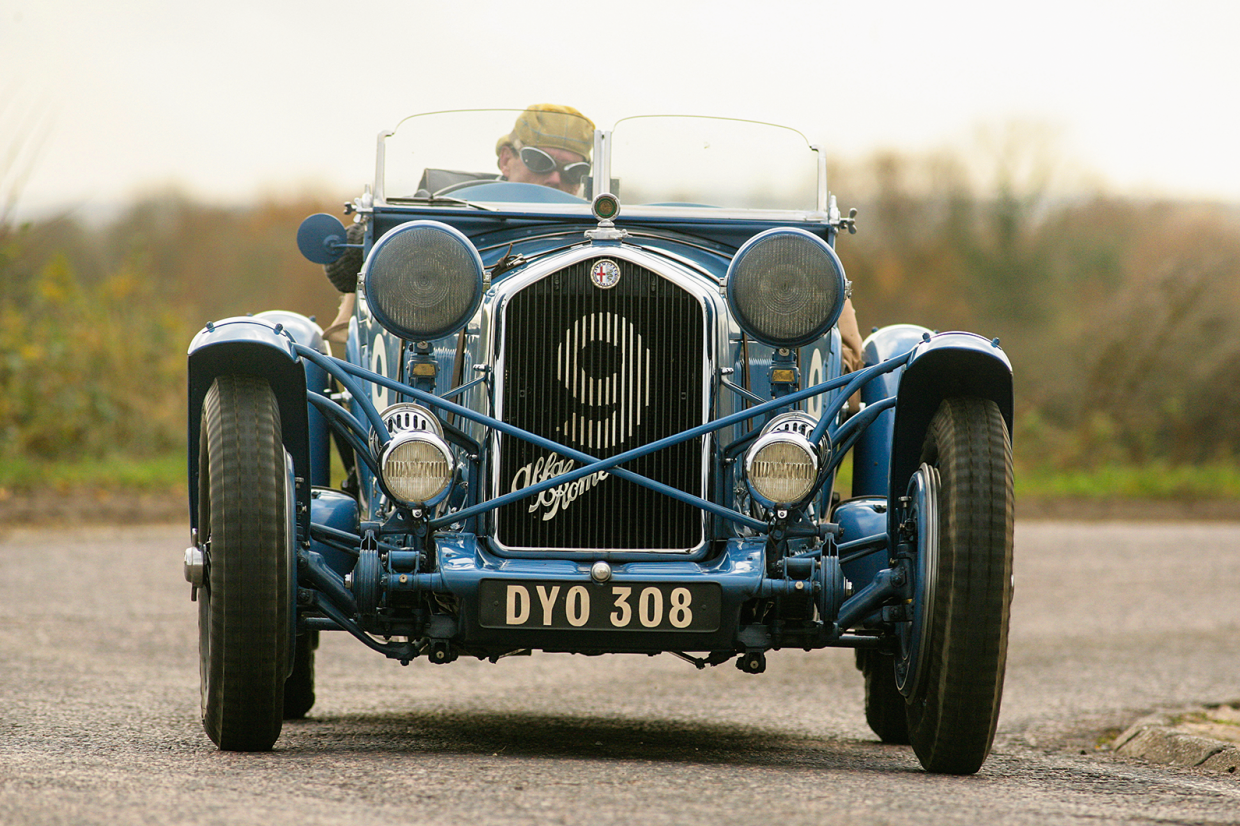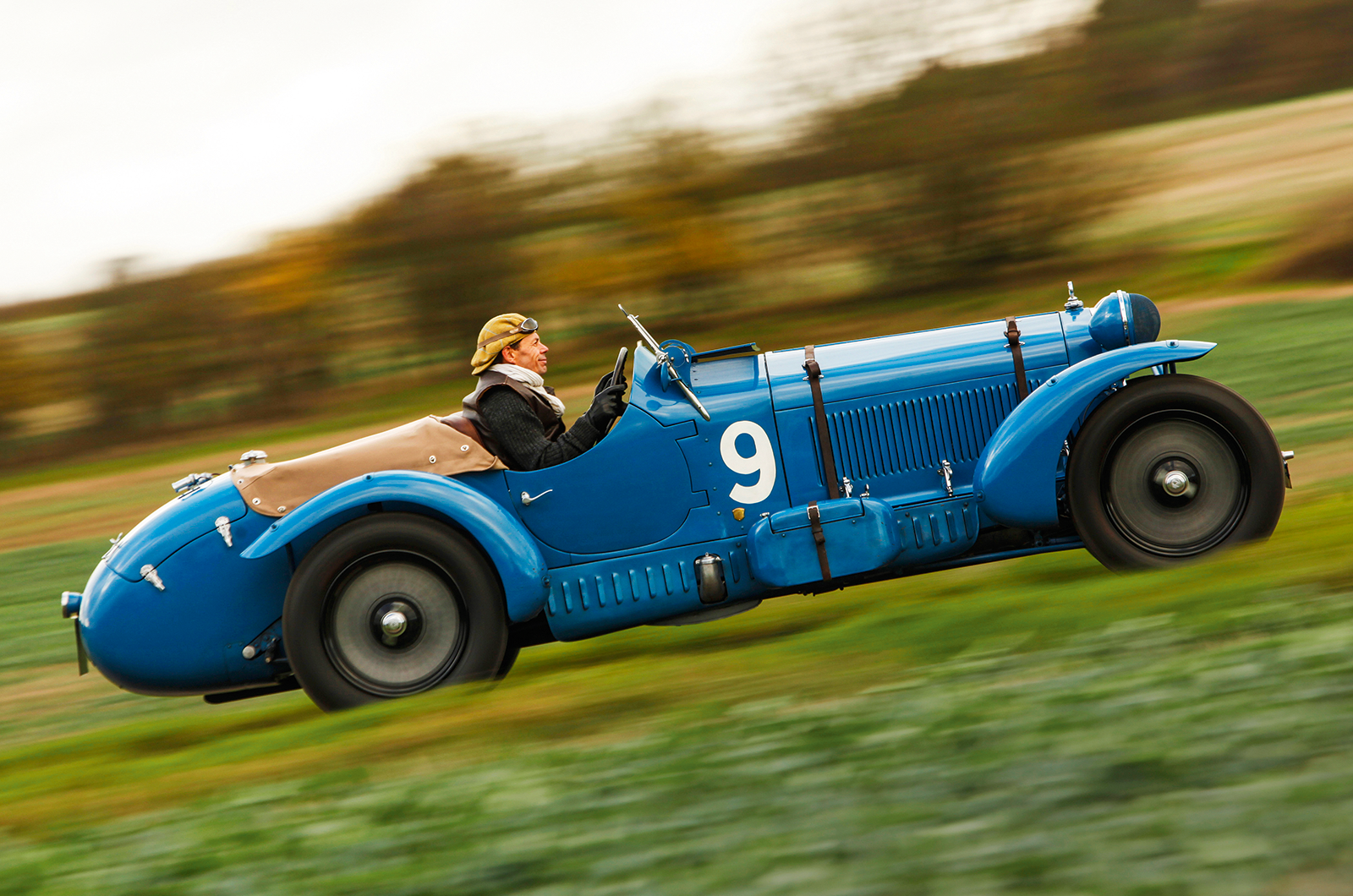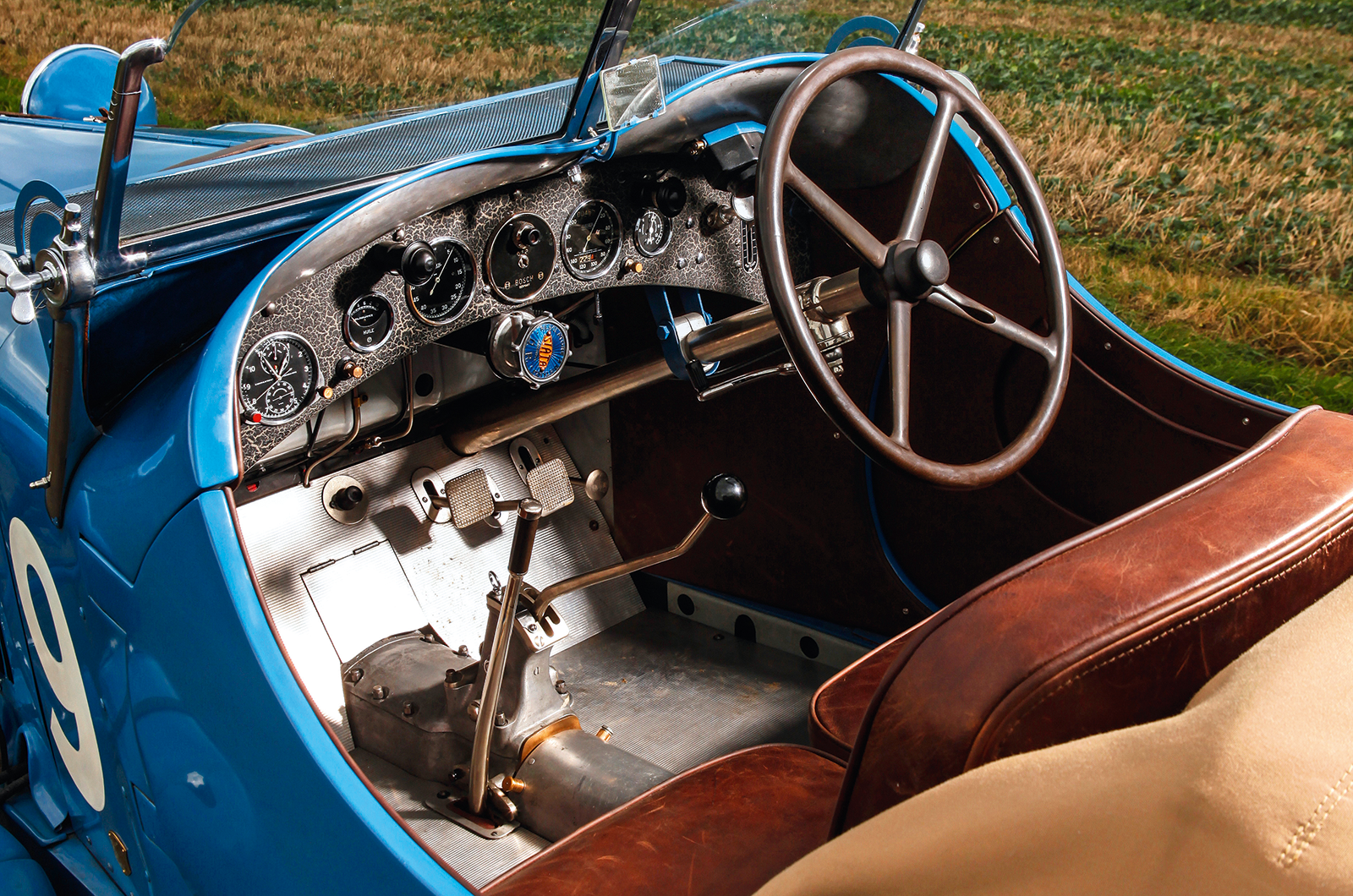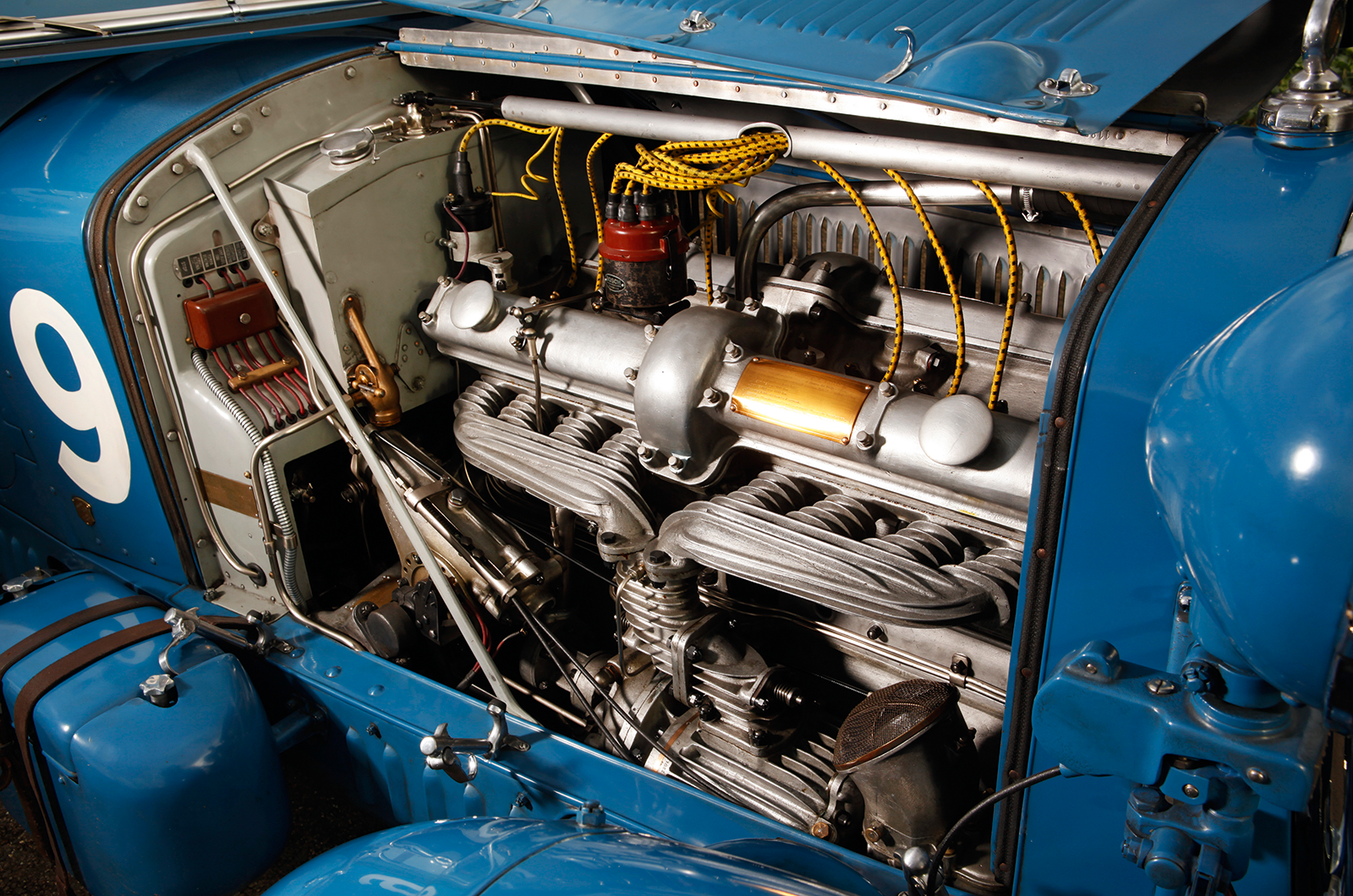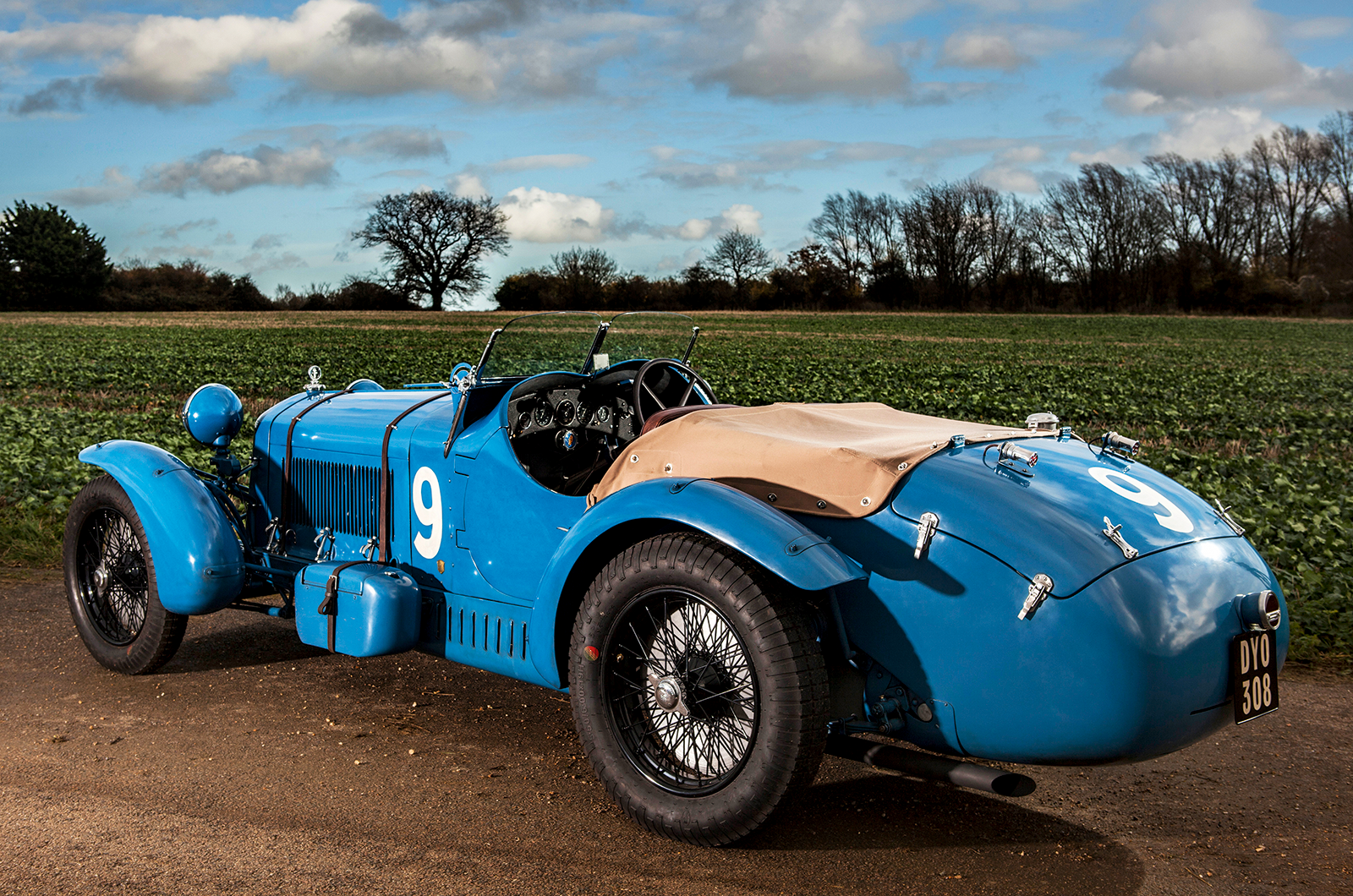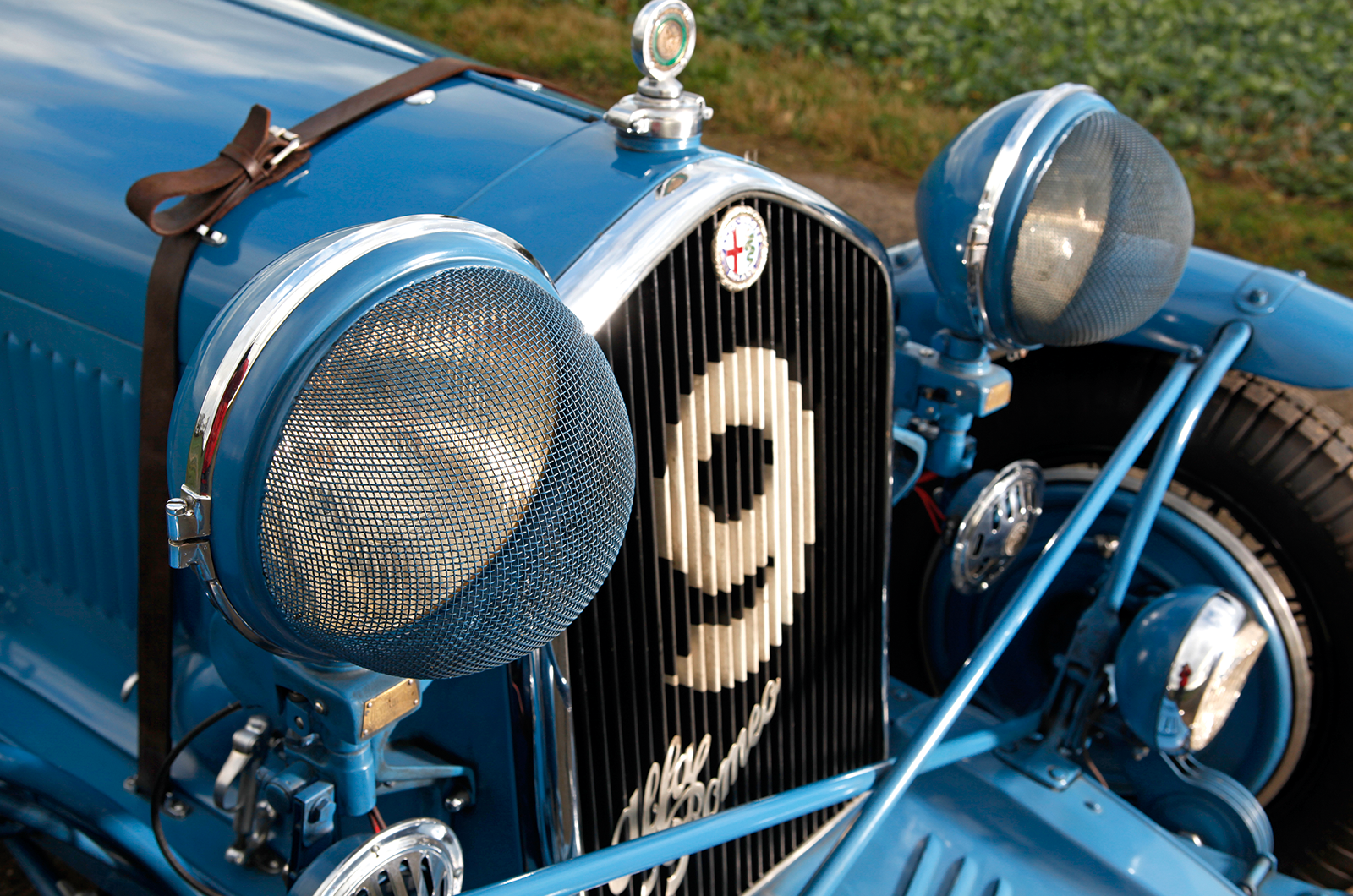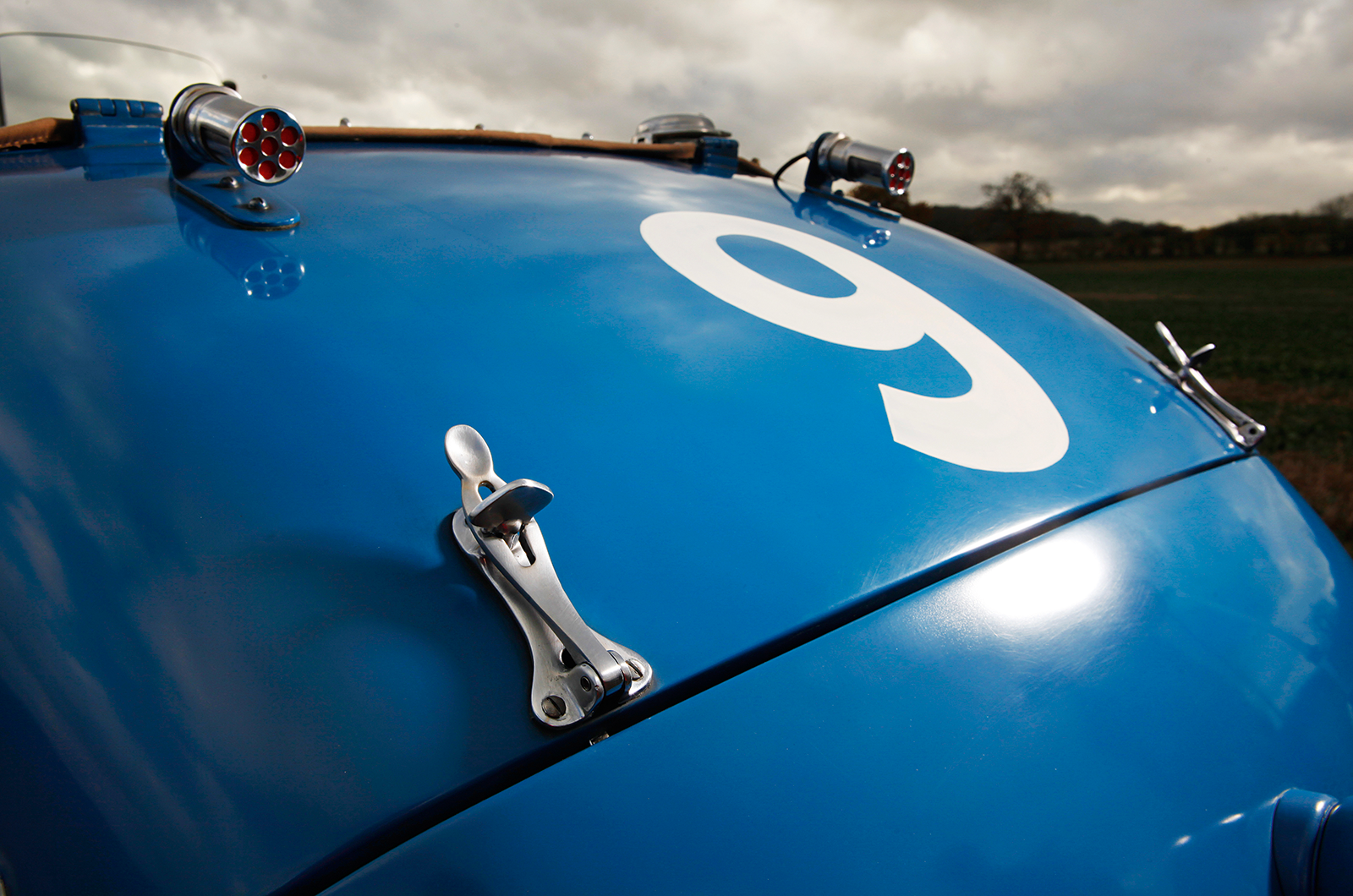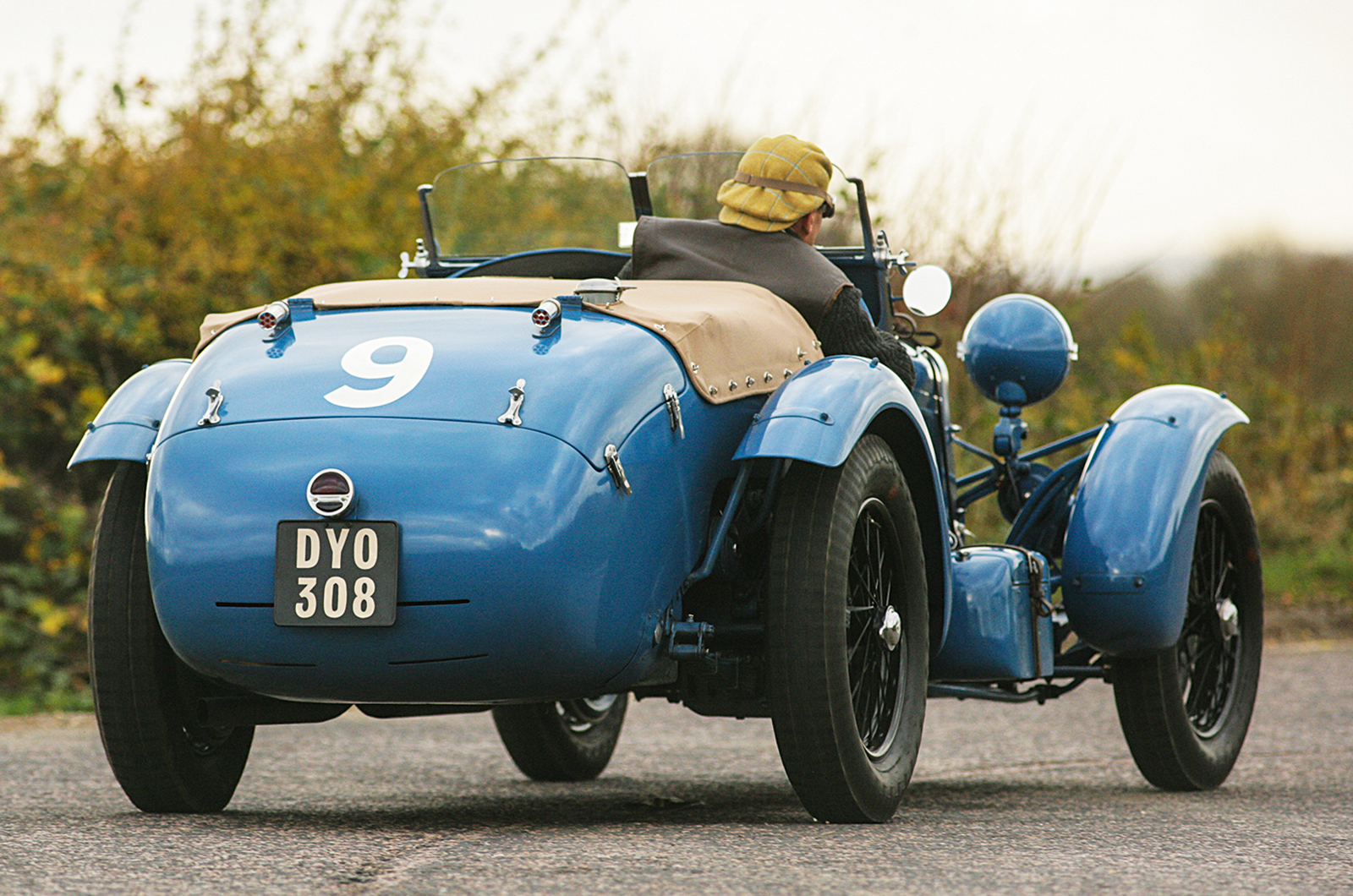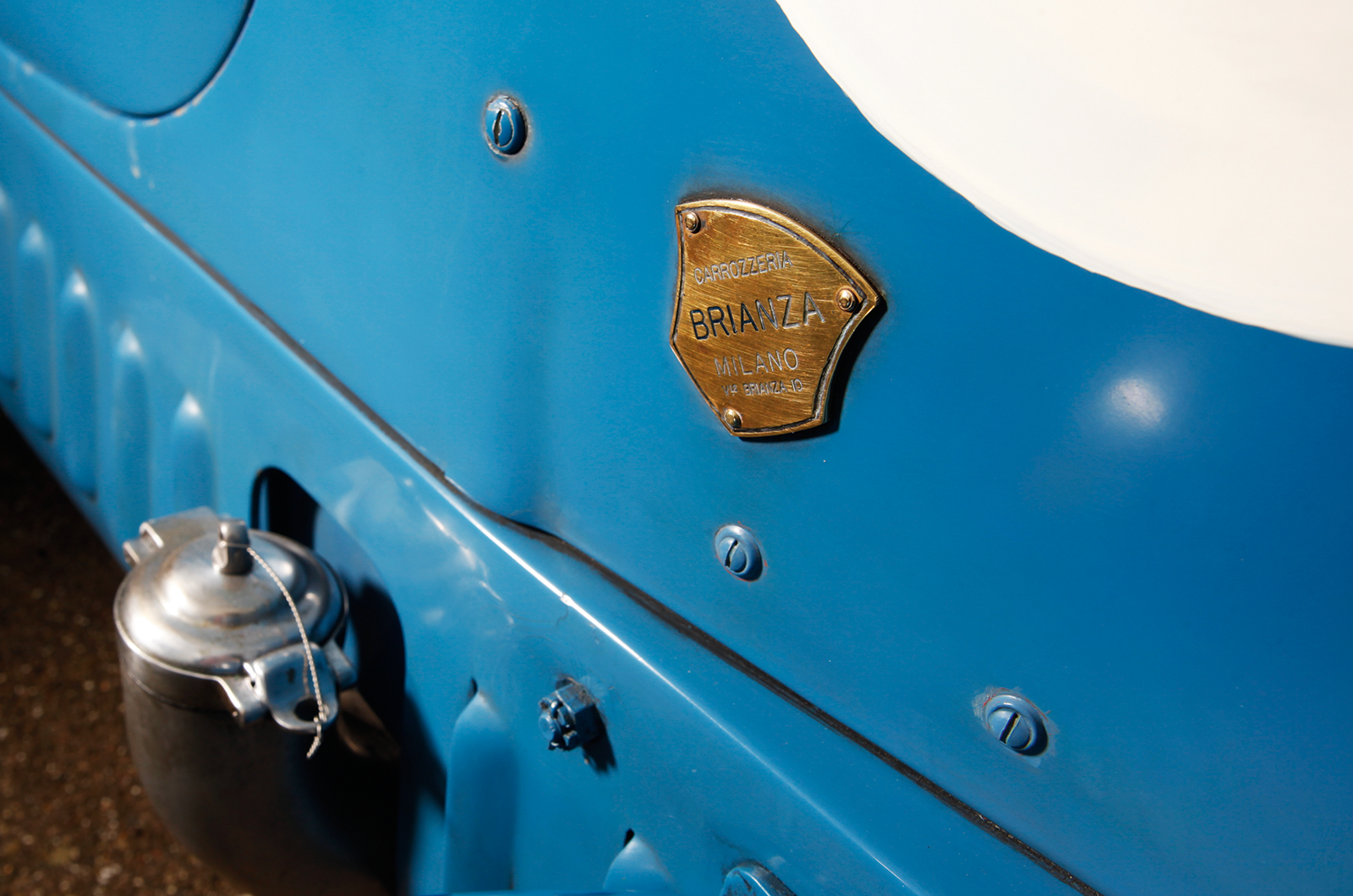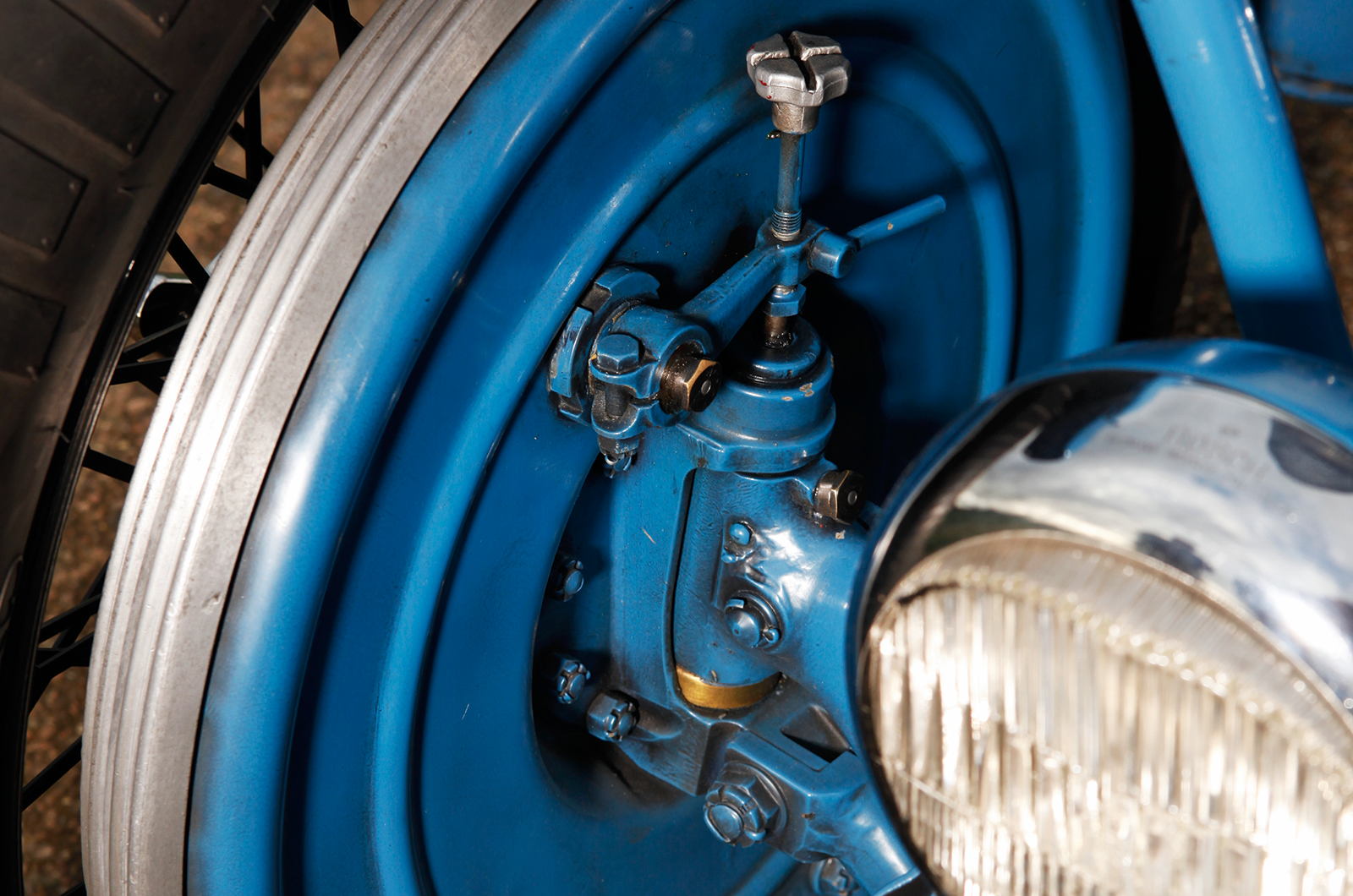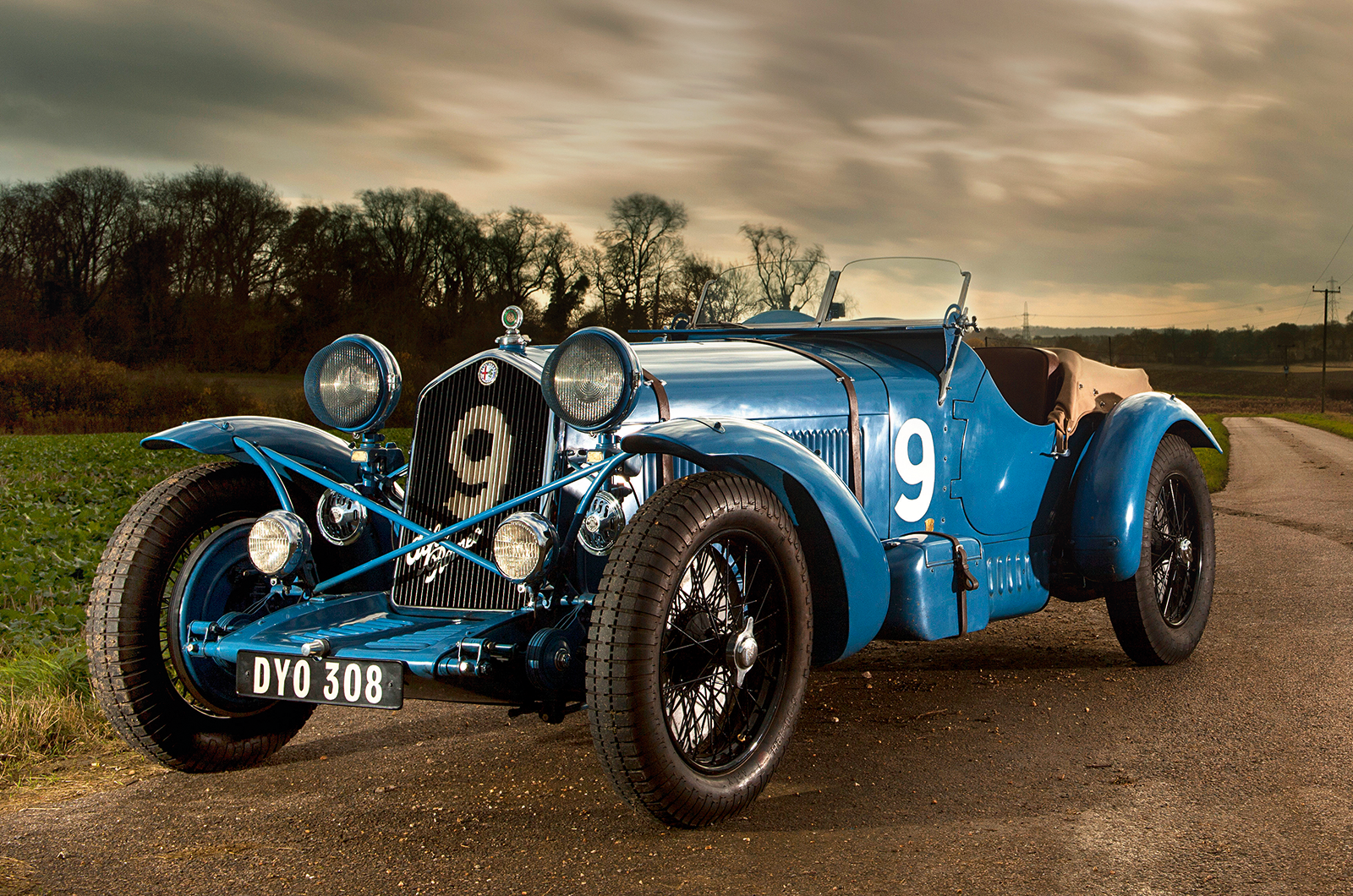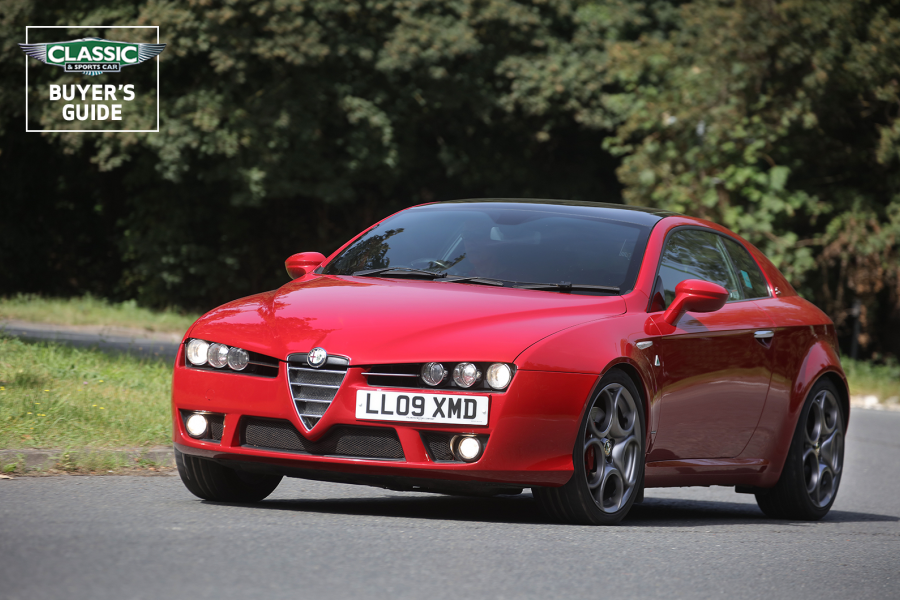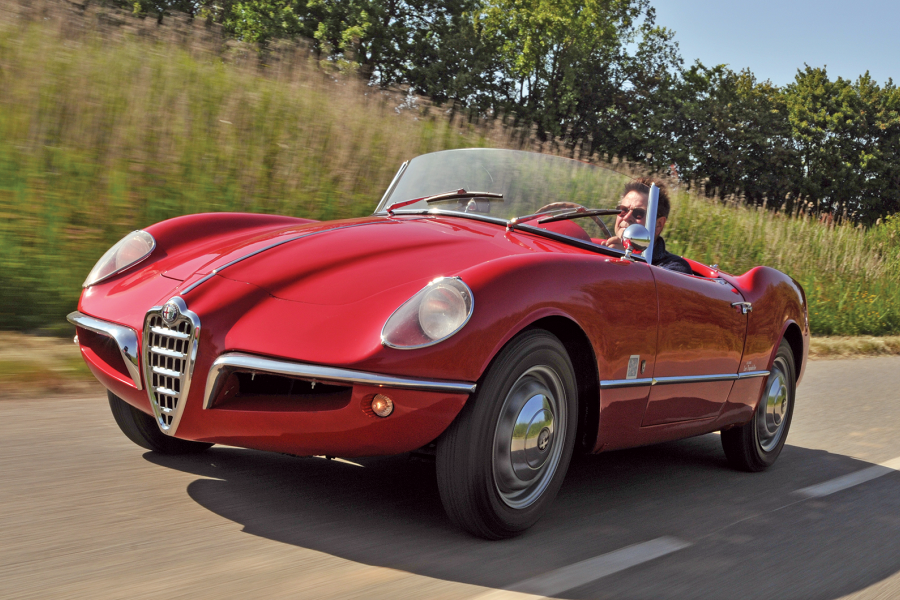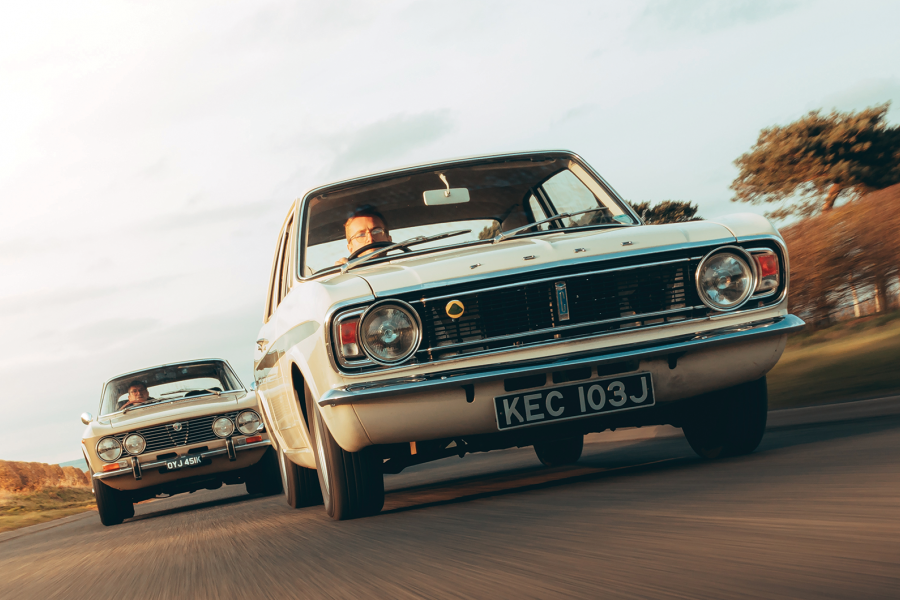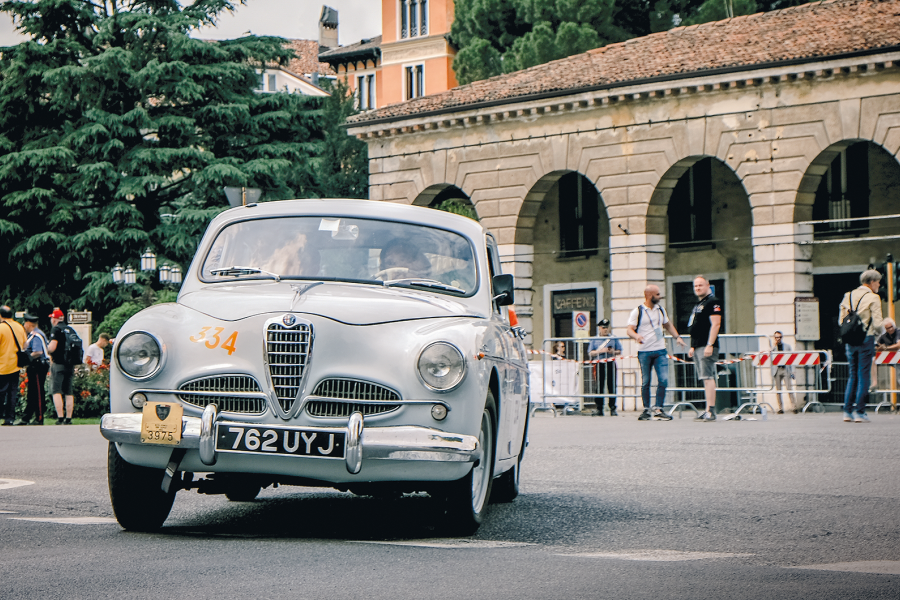The Alfa was back on the road for last-minute fettling that summer, and Blakeney-Edwards finally got to assess the fabled 8C: “Being a Nash man, I’ve always liked changing gears, but you only really need third and fourth with the Alfa.
“The steering is better than anything else at the time, particularly for such a heavy car.
“The lazy power when not really working makes it relaxing so it’ll eat up the miles.
“It’s a fantastic long-distance tourer and perfect for Le Mans.
“The handling feels progressive, but you’re cautious of leaning on such a valuable car.
“It’s stiff but predictable and not unsettled by undulation.
“If you’re sensible, you can drive with the back end and do what you want at roundabouts.
“It’s easy to see why they’re so revered, although I’d love one to take the kids to school in.”
All of his observations ring true during my drive.
The flared scuttle and raked aeroscreen offer good protection from the buffeting as you sit behind the broad four-spoke steering wheel in the stark cockpit.
The elegant gearlever moves in a clearly defined quadrant and the conventional H-gate is a joy to work once you’ve mastered the tricky timing.
Conveniently, the action from third to top and back seems much quicker than other changes but, with such a responsive throttle, the shift is fantastically rewarding if you double declutch.
The Alfa Romeo 8C-2300 boasts easy brake-drum adjustment
Although heavy at low speeds, the steering is inspiringly accurate and beautifully precise once up to pace.
The drum brakes are impressively powerful as they start to bite, but it’s the harsh ride that most dates the 8C and you are really jolted about over the worst bumps.
The positive payback from this firmness is brilliant traction and grip.
But the greatest feature is that glorious supercharged straight-eight.
Mighty low-down punch – accompanied by a deep, dramatic bellow with a marvellous underscore of thrashing geartrain and blower whoop – makes accelerating out of corners a heady, addictive thrill.
The 8C is still a quick car, with effortless overtaking ability, but that immediate acceleration and 120mph potential must have been mesmerising in its heyday.
My only regret is that I didn’t get a chance to stretch the drive into twilight.
The exhilarating pleasures from the sound, performance and aroma of this magnificent machine would double in the dark and vividly conjure that victorious summer night in 1934.
Wrigley chewing gum now evokes a whole new image.
Images: Tony Baker
This was first in our December 2013 magazine; all information was correct at the date of original publication
Luigi Chinetti
Philippe Étancelin and Luigi Chinetti drove this Alfa Romeo 8C-2300 to victory at Le Mans in 1934
Few were so closely linked to developing high-performance sports cars than Milan-born Luigi Chinetti.
Best known for his association with Ferrari, as the ’49 Le Mans winner and establishing the famous privateer North American Racing Team, Chinetti’s links with Alfa Romeo are equally significant.
Having learnt an appreciation of engineering from his father’s gunsmiths, a 17-year-old Chinetti joined the great Milanese car-maker where he struck up a friendship with a young Enzo Ferrari that would last all their lives.
Chinetti’s career as a racer stepped up when he was teamed with Raymond Sommer in a long-chassis 8C.
They beat the works on Chinetti’s debut at Le Mans, but an illness restricted him to three hours at the wheel.
He came second with Philippe Varent in his own 8C in 1932, then triumphed in the Spa 24 Hours with Monégasque Louis Chiron.
A trip to manage René Dreyfus’ 1940 Indy 500 attempt resulted in both relocating to the US during WW2, where Chinetti was initially employed by a Manhattan Rolls-Royce agent.
From 1949, Chinetti was instrumental in launching Ferrari with victories at La Sarthe: he drove 23 hours to Lord Selsdon’s single stint and won again two weeks later at Spa.
After Chinetti retired from racing, NART’s Ferraris added more Le Mans laurels when its 250LM won in ’65.
Frustratingly, the modest team boss never wrote an autobiography. He died in August 1994, aged 93.
Enjoy more of the world’s best classic car content every month when you subscribe to C&SC – get our latest deals here
READ MORE
Alfa Romeo 8C: driving a rare ‘Long Chassis’
Embiricos Bentley: unique Le Mans racer and family car
Peugeot 402 Spécial Sport: Darl’mat’s Le Mans dream
Mick Walsh
Mick Walsh is Classic & Sports Car’s International Editor
